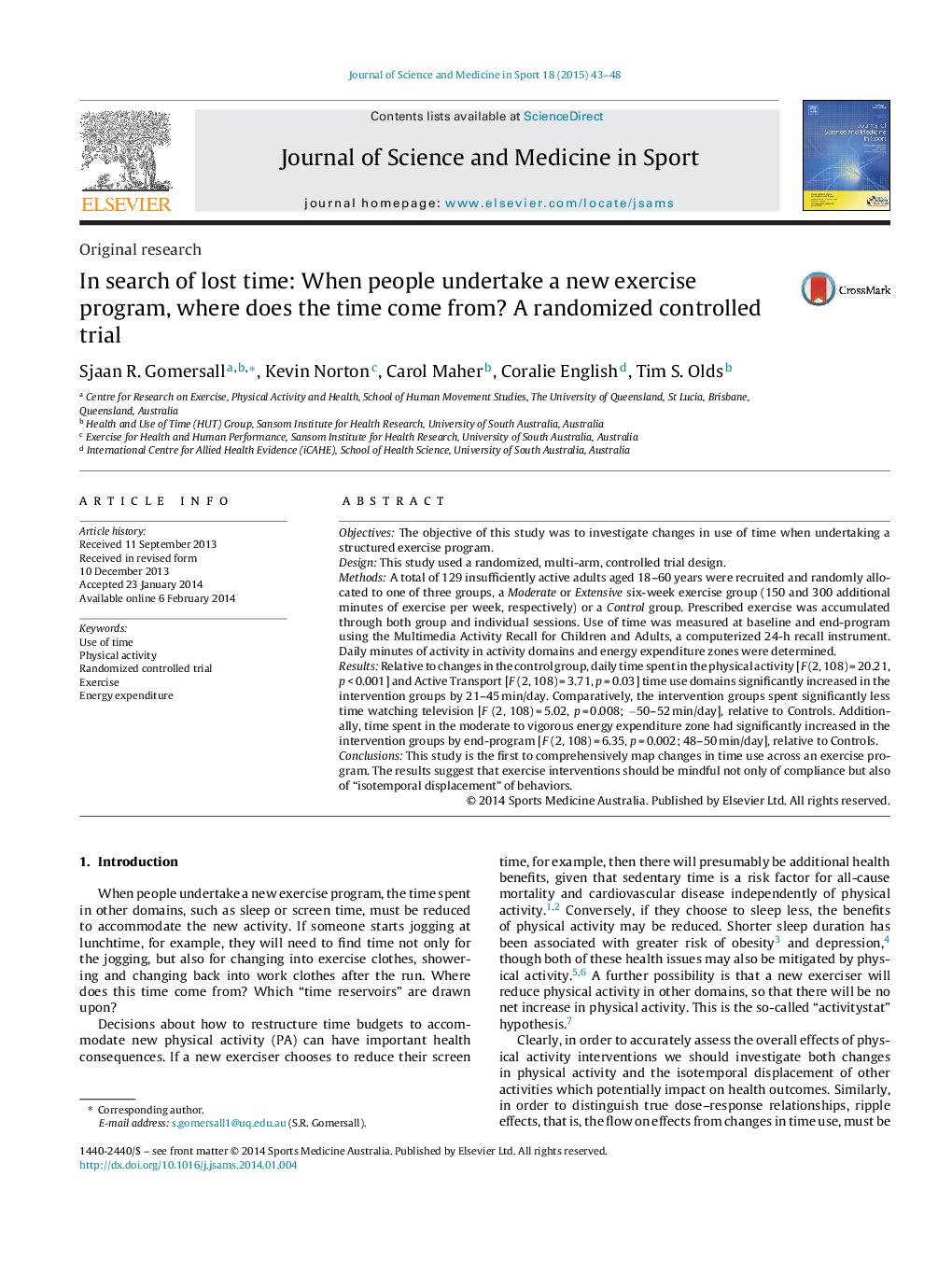| کد مقاله | کد نشریه | سال انتشار | مقاله انگلیسی | نسخه تمام متن |
|---|---|---|---|---|
| 2707603 | 1144862 | 2015 | 6 صفحه PDF | دانلود رایگان |
ObjectivesThe objective of this study was to investigate changes in use of time when undertaking a structured exercise program.DesignThis study used a randomized, multi-arm, controlled trial design.MethodsA total of 129 insufficiently active adults aged 18–60 years were recruited and randomly allocated to one of three groups, a Moderate or Extensive six-week exercise group (150 and 300 additional minutes of exercise per week, respectively) or a Control group. Prescribed exercise was accumulated through both group and individual sessions. Use of time was measured at baseline and end-program using the Multimedia Activity Recall for Children and Adults, a computerized 24-h recall instrument. Daily minutes of activity in activity domains and energy expenditure zones were determined.ResultsRelative to changes in the control group, daily time spent in the physical activity [F (2, 108) = 20.21, p < 0.001] and Active Transport [F (2, 108) = 3.71, p = 0.03] time use domains significantly increased in the intervention groups by 21–45 min/day. Comparatively, the intervention groups spent significantly less time watching television [F (2, 108) = 5.02, p = 0.008; −50–52 min/day], relative to Controls. Additionally, time spent in the moderate to vigorous energy expenditure zone had significantly increased in the intervention groups by end-program [F (2, 108) = 6.35, p = 0.002; 48–50 min/day], relative to Controls.ConclusionsThis study is the first to comprehensively map changes in time use across an exercise program. The results suggest that exercise interventions should be mindful not only of compliance but also of “isotemporal displacement” of behaviors.
Journal: Journal of Science and Medicine in Sport - Volume 18, Issue 1, January 2015, Pages 43–48
